Attending a French/Creole Lutheran Haitian church service (a mouthful!)
On the beginning of our second full day in Haiti, we got up really early and got into our dress clothes (which meant that the ~~SWEATING~~ factor was cranked on up for the morning). We walked down the road to the temporary church structure (the original church was destroyed in the 2010 earthquake) and got some seats in and amongst the Haitian congregation.

The service was done in French, with a local pastor’s friend translating some portions into English for our benefit. I didn’t catch everything being said but I was able to follow a good portion of the service!

After a series of Haitian songs (their harmonies were beautiful, to be honest the presence of the electric piano almost took away from the high quality of the singing), a subset of the IL group did their own musical contribution to the service; that was the other portion of English to the service.
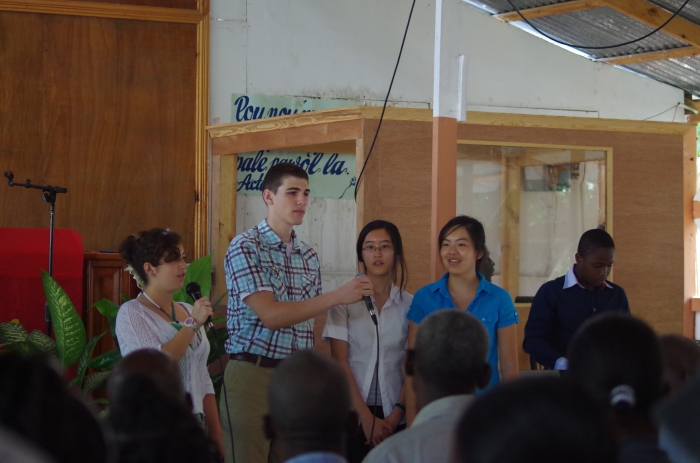
Our friend Nathan was the preacher for the day, and he spoke about the importance of loving one another, how it takes time and isn’t always easy (in French) – he certainly had an excellent preaching presence!


After the church service and the following presentation by the Haitian Red Cross, we walked back over to the guest house and changed into swimsuits for the remainder of the day’s activities.
Visiting the urban hospital of St. Michel’s, still being rebuilt after the 2010 earthquake
After another delicious meal at the guest house…

… we departed for the next portion of the day, a visit to the St. Michel’s Hospital in Jacmel. We were riding in the bed of a dump truck (see below for pictures and details) so I had an excellent vantage point for grabbing photos along the way:


The hospital, like so much else in Haiti, was gravely damaged by the earthquake in 2010 – I was surprised at the sheer scale of reconstruction going on at the site!!

The hospital was not all open to us, but we did get to drive through and then partially around the site, which gave us a gorgeous view of the surrounding area:

Our main area of visitation at the St Michel’s hospital was the NICU (Neonatal Intensive Care Unit), where the infants in most dire need of care are sent to try and heal. As with many parts of Haiti, even this critical medical centre was not free from power outages. As you might imagine, this could have disastrous, even deadly, consequences for the infants receiving care here. Even as we were visiting, the main power for the NICU was down, and only a few emergency lights were running (presumably off of generator power):

We were, as ever, separated by a spoken language barrier – but perhaps more than usual, united by a common language of care and love as we handed out donations (child hygiene kits) and waved and in a few cases, briefly played with the infants around us.


The toughest part of the visit, as seems to be the case with all the hospitals we visited, was knowing JUST how much more and better quality of care COULD be provided… provided a lot of “ifs” were true. If only more people donated; if only the Haitian government didn’t corrupt away major swathes of aid before it got to its recipients; if only more money was put into the electrical grid as to ensure continuity of service for the NICU and hospital at large; and more. For perspective – in the 4 weeks my brother was in Haiti, “only” 9 infants died in the maternity ward and NICU, which is considerably fewer than the average there… and that is a big and good hospital.
I do not have photos of the general hospital wing we visited, as the fact is: it felt more like a macabre tourism than a goodwill visit with sick adults who didn’t speak English. Besides my brother and Andrea (an EMT and a registered nurse, respectively), no one present could offer medical assistance… so we left feeling uncomfortable with having just come into look and perhaps smile, but not be able to offer anything directly. While I do not myself have any interest in learning medical skills, I must say that this uncomfortable experience served to strongly reinforce my years-long path towards “competence in as many fields as possible, just in case.” I encourage anyone, whether you go to help people in Haiti or anywhere else or just stay at home, to try and learn to fix or build or heal or whatever other skills appeal to you. You never know when you or people around you might need those skills.

BRIEF HISTORICAL INTERLUDE: THE SEVERITY OF THE 2010 EARTHQUAKE
So in order to fully grasp the backdrop of earthquake recovery for much of the island nation 5 years later, allow me to quickly go into some key details about the seismic event. Unfortunately, the island of Hispanola (Haiti and the Dominican Republic share this island) has a long history of seismic activity… but the earthquake of 2010 was a massive 7.0 magnitude quake, with multiple aftershocks for days afterwards, was particularly catastrophic. As I mentioned in an earlier post for this trip, concrete structures (that is to say: nearly 100% of the buildings within Haiti) are wildly susceptible to earthquake damage… and one can begin to read through some of the day-by-day updates from different sources and quickly realize that things went to hell in a handbasket quickly… and then stayed that way for a LONG time. The control tower at the sole international airport, damaged and unsafe. The main port’s container crane in Port-au-Prince… functionally destroyed. Two of the main (and really, only) inlets for aid and disaster relief… was suddenly gone or entirely unsafe for future use. On the ground within the country, as well, multiple hospitals and other aid-based organizations experienced building collapse and destruction, rendering the efforts of those already in place on the ground less capable of helping anyone, including themselves. The main arterial road between Port-au-Prince and Jacmel was 1) rendered extremely rough by shifting terrain but 2) rendered unusable in several places by the sheer amount of debris and detritus… and stayed that was for 10 days as local authorities proved uncapable of clearing it, further reducing city to city communications and aid-sharing alike. Hundreds of thousands of homes, and tens of thousands of commercial structures all collapsed or were rendered unsafe for further use. It was, in the definitional sense of the word, “pandemonium” (demons of all sorts, from hunger and death to building collapses to water shortages, everywhere).
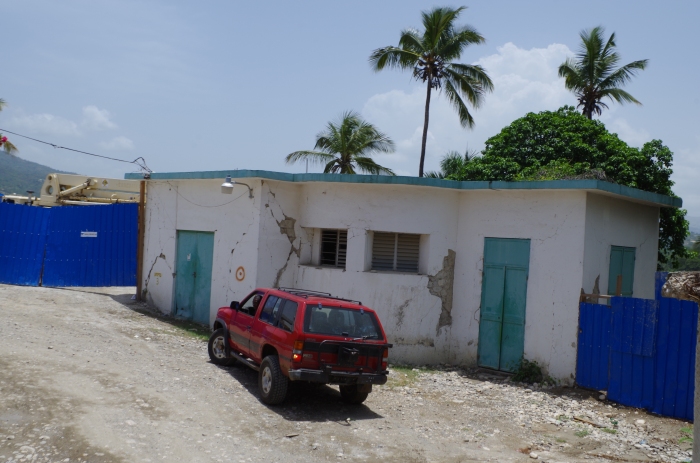
So even with that very short introduction above, I suspect you have a much better idea of JUST how devastating this earthquake was for Haiti. The immediate emergency response was a confusing and complicated mixture of heroic and quagmire. The US federal government was given control of the sole international airport and sent in a team of Air Force and FAA specialists to try and figure out how to prioritize incoming flights… and then deal with the problem of insufficient local fuel reserves to even get the landed planes back off the ground. Local mortuary services promptly and totally collapsed in the face of such sizable casualties… and so bodies were bulldozed and taken by dump trucks into mass graves as decomposition quickly set in amidst the tropical heat and humidity. The fact that an Israeli Jewish aid worker compared the situation around the number of dead bodies to the Holocaust ought to serve as another stark indicator of JUST how terrible conditions were, as aid workers of all sorts struggled to restart basic vital services. Looting started and was put down in some kind of combination of draconian and mob “justice” within the overburdened Port-au-Prince, as stores of food and water dwindled.

I will not deal with the long rebuilding and disaster relief process which followed, as that has gone for 5 years to varying degrees of success and continues to this day. I just wanted to put a brief section of this early trip blog post to call out EXACTLY what sort of odds faced Haiti a mere 5 years prior to our arrival.
“A Dump Truck to Paradise”: the long haul up to Bassin-Bleu, some of Haiti’s most beautiful natural spaces
The final task for that Sunday, then, was to climb back into our dump truck and drive out to Bassin-Bleu (French for Blue Basin, referring to a series of mountaintop water-filled swimming holes with vibrant blue water).


The dump truck actually provided one of the least stable but best-situated vantage points for photography I had yet found over the week. I got an absence of both car windshields and walled compounds and could capture even more of the character of the streets of Jacmel and out towards the mountains!


I got to know a few landmarks after repeated driving, though by no means was I an expert of the topography of Jacmel on Day 3 (or even, to be honest, by the end of the week).

Given that I have been toying with the notion of putting a snorkel on my Subaru anyways, as I want to be ready for anything up to and including having to ford a river in my vehicle… you can imagine my delight at the wide prevalence of snorkels on Toyota Land Cruisers and the like. In the case of our dump truck, however, the air intake like the rest of the truck was already high enough off the ground to enable easy fording of low rivers with no worries about hydrolocking the engine:

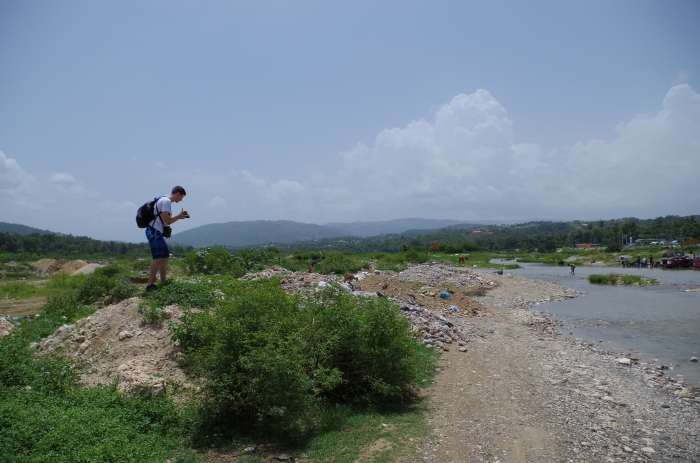
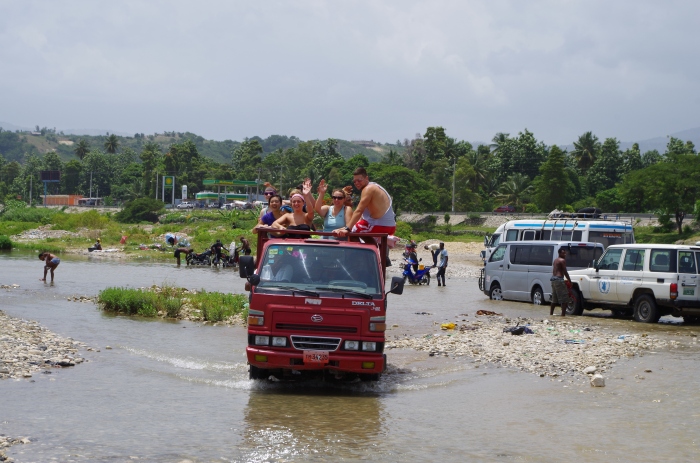
We drove up some SEVERE inclines and rough roads to get to Bassin-Bleu, so severe that I was unable and/or unwilling to risk my camera for photos… but we didn’t ever come to a stop anyways, so the photos were simply not viable on the way up. Do not fear – on a later day that week, I went on a special photography excursion with Nathan and got some GREAT views from that mountain.
We arrived at the parking area and then began the hike in and up to the lowest basin at the Bassin-Bleu park:

The basins got progressively bigger and cleaner and *bluer* as we got further up the mountains:

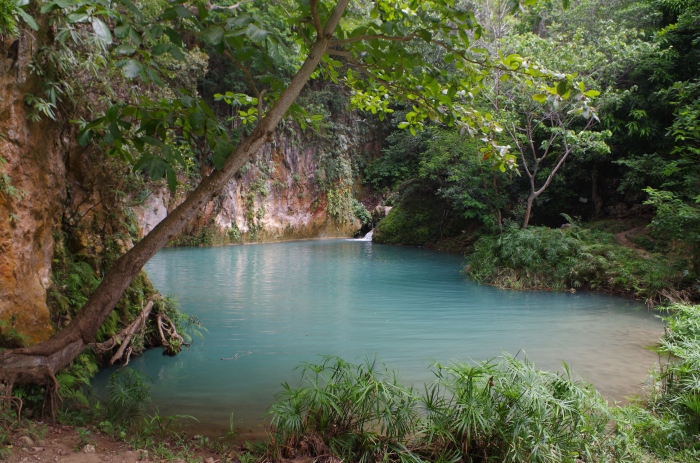
The safety of the hike and rock-climbing to the topmost basin (the actual Bassin-Bleu) was not ideal, perhaps, but we all made it up with only a few small scratches to show for our trek. And wow, let me tell you – it was worth the hike.
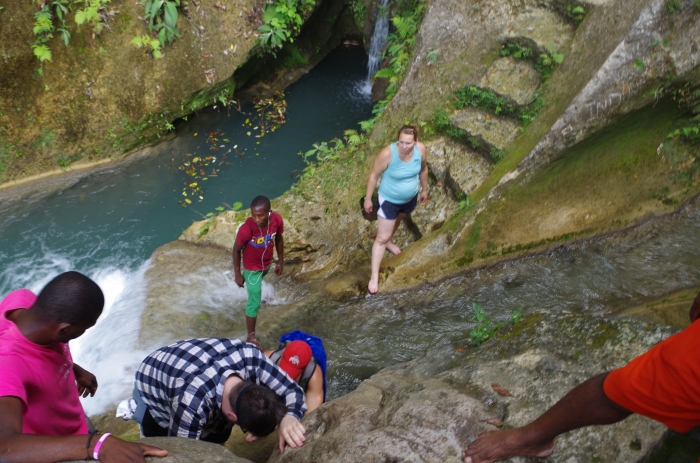
The view of the topmost Bassin-Bleu, with team members climbing up the rocks near the topmost waterfall to be able to jump down in the basin:



The remainder of the day saw a few noteworthy details:
1) my normal glasses sank into the depths of the next basin down after Bassin-Bleu, due to the power of the waterfall there. No bueno, but that means I got to wear my shades for the remainder of the week:
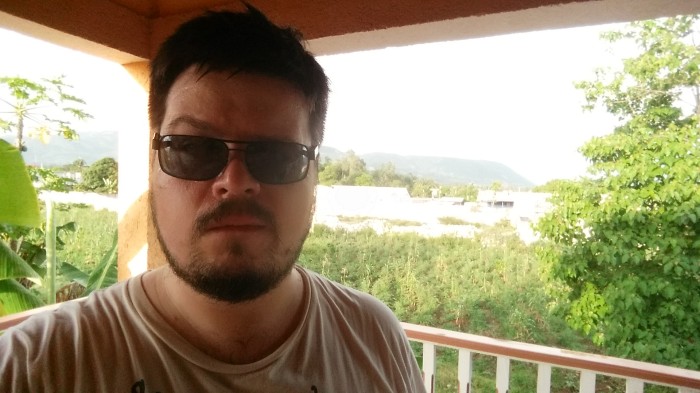
2) it rained over the course of the hike back to the truck, and then nearly the entire truck ride down to the river – we had to rush down the huge hill to try to ford the river quickly, in case the volume of rain caused it to overflow and thus force us to take an hour+ detour to the nearest bridge. I am not sure what this means, but over the 4 weeks my brother was in Haiti, it rained 3 times… and 2 of them were while I was there
3) a rainbow in the evening:

In short: day 3 was a pretty nice day, a sort of preemptive day of rest before diving into the grueling pace of the weekdays ahead!!
